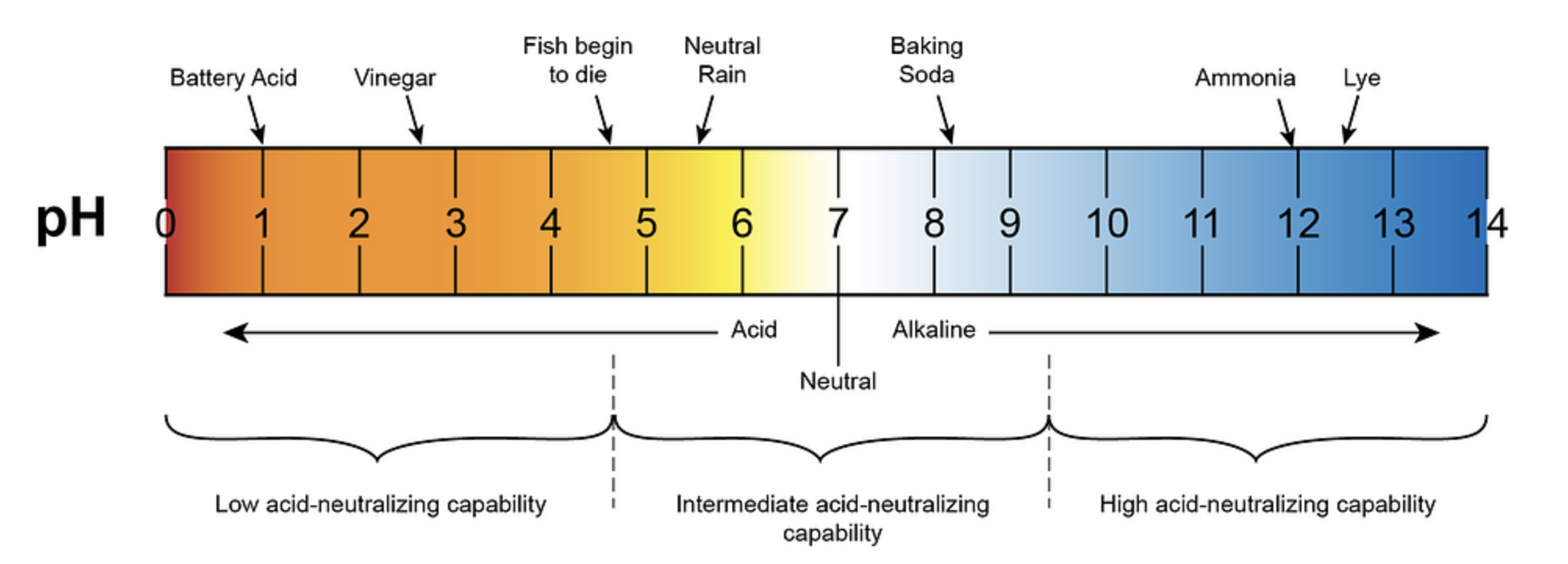The pH value of water from magma, specifically from the Halema’uma’u water lake within Kīlauea’s collapsed summit crater, is around 4.2. This high acidity is generated from two primary sources: magmatic volatiles and water-rock interactions during lava-seawater contact. Understanding the chemistry behind this phenomenon is crucial for those who may encounter such water sources.
Magmatic Volatiles: The Culprit Behind the Acidity
The primary contributors to the acidity of water from magma are the magmatic volatiles, including CO2, SO2, HF, and HCl. These gases are released from the magma and dissolve into the water, creating a highly acidic solution.
| Volatile | Contribution to Acidity |
|---|---|
| CO2 | Dissolves to form carbonic acid (H2CO3) |
| SO2 | Reacts with water to form sulfurous acid (H2SO3) |
| HF | Dissociates in water to form hydrofluoric acid (HF) |
| HCl | Dissociates in water to form hydrochloric acid (HCl) |
It is important to note that these volatiles are generally thought to be degassed subaerially at Puu Oo cinder cone before reaching the ocean, reducing their impact on the water’s pH.
Water-Rock Interactions: Enhancing the Acidity
In addition to the magmatic volatiles, the water-rock interactions during lava-seawater contact also contribute to the high acidity of the water from magma. As the lava interacts with the seawater, various chemical reactions occur, releasing additional acidic compounds into the water.
One of the key reactions is the hydrolysis of silicate minerals in the lava, which can produce silicic acid (H4SiO4) and other acidic species. This process, combined with the dissolution of magmatic volatiles, results in the overall low pH of the water.
Potential Hazards and Handling Considerations
When dealing with water from magma, it is crucial to be aware of the potential contaminants and chemicals present. These include not only the high levels of acidity but also the presence of harmful magmatic gases and heavy metals that could be detrimental if ingested or come in contact with the skin.
To mitigate the risks, it is recommended to use protective gear, such as gloves and safety goggles, when handling the water. Additionally, any substances added to balance the pH should be carefully measured and mixed to avoid any adverse reactions.
Balancing the pH
For DIY users with advanced hands-on skills, balancing the pH of water from magma can be a viable option. One approach is to add alkaline substances, such as baking soda (sodium bicarbonate) or lye (sodium hydroxide), to neutralize the acidity. However, this process should be done with caution, and the resulting solution should be thoroughly tested to ensure it is safe for consumption.
It is important to note that the addition of these substances should be done in small, controlled increments, as over-neutralization can lead to other issues. The goal is to achieve a balanced pH that is safe for use or consumption.
Alternatives: Naturally Alkaline Water Sources
As an alternative to dealing with the acidity of water from magma, consider using naturally alkaline water sources, such as those filtered through volcanic rock. These waters, like Waiākea Water, have a naturally high pH due to the minerals absorbed during filtration, without the need for added chemicals or processes.
These naturally alkaline water sources can provide a safer and more sustainable option for those seeking to avoid the potential hazards associated with water from magma.
Conclusion
The pH of water from magma, specifically from the Halema’uma’u water lake within Kīlauea’s collapsed summit crater, is around 4.2, making it highly acidic. This acidity is generated from two primary sources: magmatic volatiles and water-rock interactions during lava-seawater contact.
Understanding the chemistry behind this phenomenon is crucial for those who may encounter such water sources. Proper handling, the use of protective gear, and the careful addition of alkaline substances to balance the pH are essential when dealing with water from magma.
As an alternative, consider using naturally alkaline water sources, such as those filtered through volcanic rock, to avoid the potential hazards associated with the acidity of water from magma.
References:
- Volcano Watch: Pondering the pond – What the Halema’uma’u water chemistry tells us
- Geochemistry of hydrothermal fluids from Puu Oo, Kilauea volcano, Hawaii: temporal variations and implications for the volcanic hydrothermal system
- Chemistry of hydrothermal fluids from the Puu Oo vent, Kilauea volcano, Hawaii
- What is Volcanic Water?

